Submachine guns of the Beretta M1938 family (Italy)
The draft of the new weapon did not appear immediately. By the mid-thirties, it became clear that the existing submachine gun "Beretta" arr. 1918 was no longer fully compliant with modern requirements and should be replaced with newer and more sophisticated weapons. In order to re-equip the troops in 1935, the specialists of the Beretta company, led by the designer Tulio Marengoni, proposed a new design of a submachine gun. It was based on the M1918 / 30 carbine design, but differed from it in some details. This weapon, in some sources denoted as M1935, did not meet all the requirements, which is why the work continued.
The next version of the weapon was proposed in 1938, which affected its name. This submachine gun remained in history under the designations M1938 ("Model 1938 r.") And MAB 38 - Moschetto Automatico Beretta 38 ("Automatic Carabiner Beretta 38 of the Year"). These designations are equivalent and can be used in parallel. To denote later modifications, appropriate indices are applied with additional letters.
When creating a new weapon was planned to use the existing developments. In addition, some innovations were planned. For example, it was proposed to abandon the relatively weak cartridge 9x19 mm Glesenty. This munition, which was a modified version of the 9x19 mm Parabellum cartridge, differed from the prototype in a smaller amount of gunpowder and, as a result, its main characteristics. Submachine gun MAB 38 proposed to develop a new enhanced version of the cartridge 9x19 mm Parabellum. Calculations showed that a small increase in the powder charge will increase the initial velocity of the bullet by about 50 m / s and thereby improve the basic parameters of the weapon.
In the 1938 year, according to the results of the design work, the first prototype of the perspective weapon was assembled. It is noteworthy that he had some noticeable features that did not pass to the next weapon of the family. Perhaps the most notable difference was the design of the trunk with a muzzle brake-compensator, valleys in the front and an aluminum radiator in the rear. It was later decided that this design of the trunk does not meet the existing requirements, because of which the radiator with fins was replaced with other means of cooling.
Verification of the first prototype showed that some of the original solutions implemented in its design did not justify themselves. According to the test results, T. Marengoni and his colleagues reworked automatic weapons, and also changed the design of the barrel and its cooling systems. The result of these alterations was an increase in the reliability of the mechanisms and a marked reduction in the cost of the finished weapon. The updated submachine gun did not receive its own designation, retaining the index M1938. In this form, and under this name in the future, the weapon went into series. It should be noted that in some sources this weapon is referred to as M1938A, however there is information about the use of this name in relation to another family development.
As a further development of the M1918 submachine gun, the new Beretta M1938 had a similar design and assembly layout. The main element of the weapon was a receiver, made in the form of a hollow tube with rectangular lower compartments under the front and rear parts. The front rectangular part served as a store shaft, and the rear part was a casing of the firing mechanism. The barrel was attached to the front of the receiver on the thread, to which a tubular casing with perforation was attached. Behind the box was closed with a round lid. Receiver assembled with installed parts USM was fixed on a wooden bed, which was a modified unit of existing weapons such as M1918 / 30.
Prospective weapons equipped with a rifled barrel caliber 9 mm long 315 mm (35 calibers). The barrel was fixed in the receiver, and outside protected by a perforated casing. It was proposed to fasten the brake compensator to the muzzle with four transverse slots in the upper part. Due to the correct redistribution of the flow of powder gases, this device was supposed to reduce the barrel toss during firing. On the casing of the barrel, in the front lower part, devices for fastening the bayonet-knife were provided.
Like its predecessor, the new submachine gun had to use automatics based on the free gate. The main part of this automation was a shutter of complex shape. Its rear part had the form of a cylinder, and a deep recess was provided on the lower front. In addition, inside the gate there were several cavities for the installation of various internal parts, including the drummer. An interesting feature of the shutter Beretta M1938 was the absence of its own cocking handle. This device is made as a separate part.
The cocking handle was located in a special recess on the right surface of the receiver and was an L-shaped (when viewed from above) detail. When moving backward, the handle interacted with the bolt and cocked it, after which it freely moved forward. In its front position, the handle covered the side slit of the receiver with a long curtain-plate and did not allow dirt to get inside the weapon. It is noteworthy that the use of such protection from pollution has led to a redesign of the system for the ejection of liners.
A characteristic feature of the M1918 and M1938 submachine guns was the use of relatively small diameter return-action springs. Since in this case the spring could not have sufficient bending rigidity, it was placed inside the tubular casing and the corresponding hole in the gate. For greater rigidity on the bolt side, a metal rod entered the spring. The casing is made in the form of a glass with a washer on the bottom, designed to abut the back cover of the receiver.

The first prototype of the MAB 38. The barrel is well visible with ribbing and without casing. Photo Opoccuu.ru
Submachine gun "Beretta" MAB 38 received a trigger mechanism trigger type. Inside the gate, in its front part, there was a movable drummer. In the middle part were placed the trigger and some other details. Their task was to ignite the cartridge primer after moving the bolt to the front position. Due to the use of reinforced cartridge to the automatics of weapons, there were special requirements regarding the correct sequence of work.
While working on the project of a new weapon, T. Marengoni applied a rather old idea, which was abandoned two decades ago. He suggested not to equip a submachine gun with a translator of fire. Instead, two separate triggers should be used: the front one was to be responsible for firing single shots, the rear one - for automatic fire. Triggers had a different shape of the upper part, because of which they interacted differently with other details of the trigger. Provided and fuse. It was made in the form of a rocking flag on the left surface of the receiver. He had to move through a shallow recess in the box. According to some reports, the fuse blocked only the rear trigger and allowed firing single.
The new submachine gun was supposed to use reinforced 9x19 mm Parabellum cartridges placed in detachable box magazines. With the M1938 product, double-row magazines with a capacity of 10, 20, 30 or 40 cartridges could be used. The store was proposed to be placed in the lower receiving window in the box, covered with a metal lining with a movable shutter. To avoid contamination of the weapon, the window should be closed after the store was removed. With the help of its own spring, the store handed in cartridges to the filling line, where they were picked up by the shutter. After the shot, the bolt removed the cartridge case and threw it through the window in the upper left part of the receiver. Due to the presence of a movable shutter handle with its own shutter, a different arrangement of extraction mechanisms was not possible.
The Beretta MAB 38 submachine gun received a wooden box with a pistol protrusion, inside which cavities were provided for the installation of all necessary mechanisms. The general assembly of weapons was carried out with the help of pins and screws. In addition, the rear part of the casing of the trunk was additionally attached to the box with the help of a collar, which was provided with a front swivel. The back was made in the form of a notch on the left surface of the stock with a metal axis.
Weapons received open sights. On the trunk housing, in front of the muzzle brake-compensator, positioned a small fly. In the middle part of the receiver (behind the window for ejection of liners), an open sight was provided with the ability to be adjusted for firing at different distances.
The total length of the M1938 submachine gun was 946 mm, the weight without cartridges - 4,2 kg. Thus, the new weapon was shorter than its predecessor, but differed from it in greater weight. Nevertheless, other characteristics, including increased firepower, gave the newer weapon a noticeable advantage over the old one.
Automatics based on a free gate and a reinforced pistol cartridge allowed to fire at a rate of up to 600 shots per minute. Shooting was carried out with an open shutter. The fire mode was chosen by using different triggers, which to some extent facilitated and accelerated the work of the shooter. The reinforced cartridge with an increased weight of gunpowder, according to various sources, accelerated the 9-mm bullet to an initial speed of the order of 430-450 m / s. Due to this, the effective range of fire reached 200-250 m.
In 1938, Beretta manufactured and tested prototypes of a new submachine gun, which opened the way for this weapon to join the army. In addition, the development of the structure continued. At the end of the same year, a sample was presented, known as M1938A, created with the wishes of the army. It differed from the basic weapon by the design of the efficient brake-compensator and the absence of fastenings for the bayonet. The rest of the M1938A / MAB 38A was similar to the base M1938 / MAB 38.
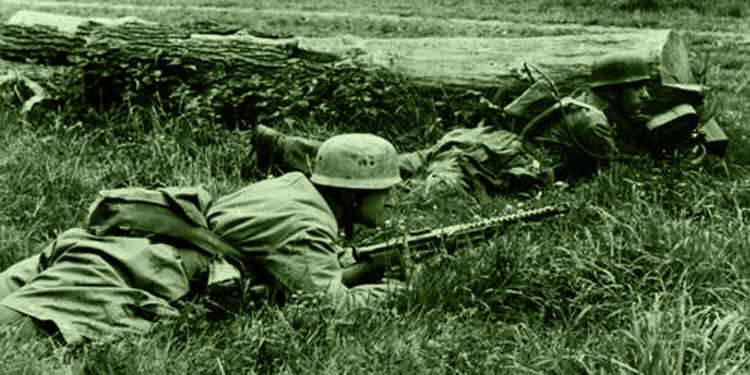
German paratroopers with Italian machine guns M1938. Photo Opoccuu.ru
A promising submachine gun was developed to arm the army and security forces. Their representatives got acquainted with the new weapon, after which the first contracts appeared. The starting customer of the MAB 38 in the first version (with the old brake-compensator and bayonet fastenings) was the colonial police Polizia dell'Africa Italiana, who worked in Africa. To arm the colonial police were ordered several thousand new submachine guns.
Later, contracts were signed for the supply of machine pistols M1938A for the army, carabineros and other structures. According to reports, various special forces were the first to receive new weapons. In the future, based on the available capabilities, the command distributed new weapons among other units. Because of the impossibility of producing the required number of weapons before the 1942-43, the Beretta MAB 38 system was available only to tank crews, “black-shirts”, carabineers, troops, and some other structures. Despite the small distribution, such weapons showed good results and deserved good reviews.
Over time, some units operating T. Marengoni design submachine guns began to receive special vests for transporting stores. On the chest part of such a vest there were five horizontal oblong pockets for shops for 40 cartridges. Access to the store was carried out through the right valve with a clasp. For the similarity with the traditional Japanese combat equipment such a vest was nicknamed "Samurai".
Amphibious units used standard submachine guns, although they developed a special version of the weapon. A submachine gun with the symbol Modello 1, developed in 1941, instead of a box, got a pistol grip and a folding metal butt. For the convenience of holding weapons was extended shop shaft. This modification did not go into the series, but the original ideas of this project were later used in new developments.
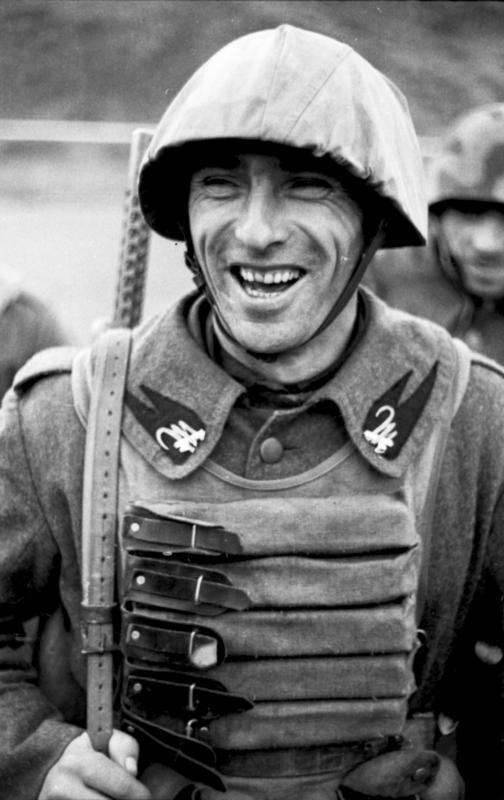
Italian soldier with a M1938 submachine gun and a samurai vest with stores. Photo of Wikimedia Commons
The main reason for insufficient production was the relatively high cost of weapons. For this reason, in 1942, the M1938 / 42 project was developed, the purpose of which was to simplify the design of the weapon and reduce the cost of its production. In the course of this modernization, the submachine gun lost the barrel casing and the lid of the magazine window. The sight was left without the possibility of changing the firing range, the front box was shortened to the window of the store, and the barrel received several longitudinal lobes and became shorter. Finally, the requirements for the quality of manufacturing parts were reduced, which also affected the complexity and cost of production.
The M1938 / 42 submachine gun with 213-mm barrel (23,6 caliber) had a total length of 800 mm and weighed only 3,27 kg. Automation and trigger mechanism remained the same, but the maximum rate of fire fell to 550 rounds per minute. Preserved two separate triggers.
The MAB 38 / 42 product became the basis for two new weapons. The first was the M1938 / 43 submachine gun, which differed from the 1942 model of the year only in the lack of lobes on the barrel, which led to some simplification of production. The subsequent M1938 / 44 had more serious differences.
In the M1938 / 44 project, the back of the valve has been reworked and a new return spring has been applied. Instead of a spring of small diameter, it was proposed to use a larger piece that does not need additional covers and simply placed inside the receiver. Despite such improvements, the characteristics and dimensions of the weapon remained at the same level. At the same time, the cost of production has noticeably decreased. According to some reports, submachine guns arr. 1943 and 1944 produced both with a wooden box, and with a metal butt.
It should be noted that all submachine guns up to and including the MAB 38 / 43 model were made before the surrender of the Kingdom of Italy. The release of the M1938 / 44 sample was already established by the Italian Social Republic. There is reason to believe that the use of new modifications was the result of a reduction in production capacity associated with the onset of the anti-Hitler coalition.
Submachine guns of the MAB 38 family of the first models were produced in relatively small quantities, which is why they were not widely used. The situation changed only in 1942. This led to the beginning of the supply of such weapons to a large number of units of the Italian army. In addition, mass production contributed to the rearmament of the Italian, Yugoslav and Albanian resistance, which successfully used the captured submachine guns.
Several export contracts were signed. According to reports, in 1941, Romania ordered Italy’s 5 thousand submachine guns in the MAB 38 version. This weapon was produced and handed over to the customer early next year. Shortly thereafter, a contract appeared with Japan for the supply of 350 weapons. Before the capitulation in September of 1943, the Italian gunsmiths had time to send only 50 submachine guns to the customer.
A number of Italian weapons were supplied by Nazi Germany. Products arr. 1942 and 1943 were adopted under the designation Machinenpistole 738 (I) or MP 738. The newer MAB 38 / 44 was operated under the designation MP 737.
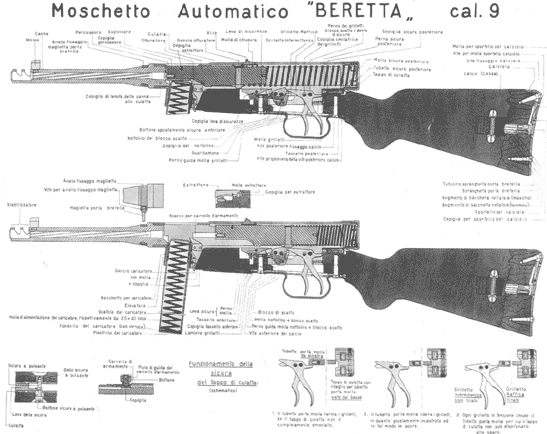
"Beretta" M1938 / 44 in section. Figure Berettaweb.com
After the end of World War II, the Beretta M1938 family of submachine guns remained in service with several armies, primarily Italian. This weapon has proven itself well during the war, and its quick replacement was not possible. In addition, the replacement was soon considered unnecessary, and in 1949, a new modification of the weapon was developed.
The M1938 / 49 submachine gun was a “refined” version of the M1938 / 44 with improved production quality and some design changes. The end of hostilities did not allow the manufacturer to save on the performance of weapons, which accordingly affected the serial pistols, machine guns. Instead of the fuse box on this weapon, a fuse was installed in the form of a transverse button located above the trigger hooks. When this part was shifted to one side, the USM was locked, and the opposite position allowed to fire. In the mid-fifties, the MAB 38 / 49 product was renamed Beretta Model 4. Under this name the weapon was exported.
In 1951, the MAB 38 / 49 became the basis for the MAB 38 / 51 submachine gun or Model 2. Such weapons have lost a wooden box, instead of which they installed relatively short side plates, a pistol grip and a folding stock. A long shop shaft was also used, similar to that used on Mod 1 41 of the year. In 1955, the Model 2 became the basis for the Model 3 - a weapon with a retractable butt and an automatic handle guard.
The main customer of the Beretta M1938 submachine guns were the Italian armed forces and security forces. During the Second World War, a number of such weapons were ordered by the Axis countries, and some of the released samples were captured by the partisans. After the war, Italy has established a massive release of updated weapons for their needs and for export supplies. A significant amount of weapons MAB 38 modifications were sold to Latin America and Asia. In addition, the Federal Republic of Germany, which operated these submachine guns until the early sixties, became a major customer.
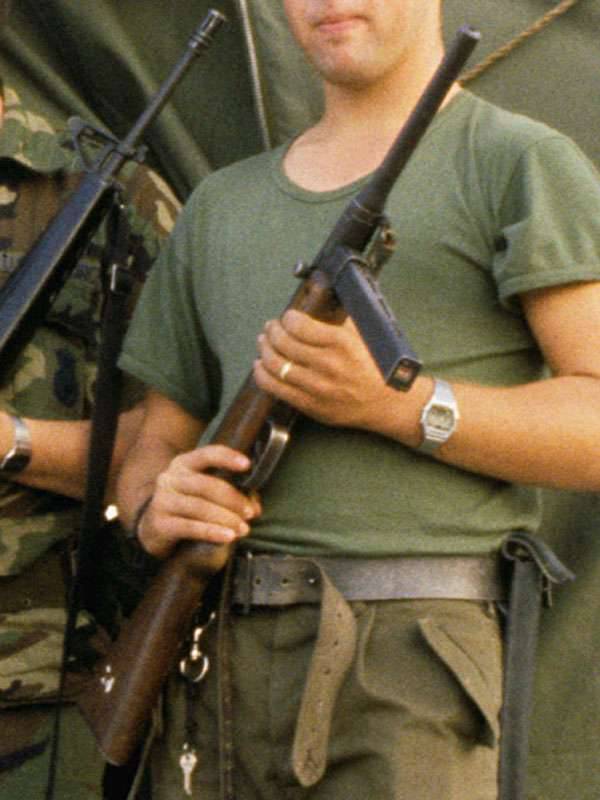
American soldier with a Beretta Model 1938 / 49 submachine gun. Photo Militaryfactory.com
The production of the later modifications of the M1938 submachine gun Beretta continued until the 1961 year. After that, the assembly of such weapons was discontinued due to the appearance of a newer and more advanced model. The company Beretta has mastered the production of a new submachine gun Model 12, which soon began to enter the army and the police. The use of existing weapons continued over the next few years, but was later discontinued due to the replacement with new models. By the second half of the sixties, Italy had completely abandoned the old and outdated MAB 38 of all modifications.
The design of the Beretta M1938 / MAB 38 submachine gun is of great interest because of its long and unusual history. This weapon was created in the late thirties, and then was actively used by the army and was repeatedly modernized in connection with its new demands. After the end of World War II, submachine guns of the family did not go to the smelting due to obsolescence. On the contrary, their production and further development continued. The latest modifications of the family were created in the mid-fifties - through 16-18 years after the development of the base model. The operation of weapons, in turn, lasted until the mid-sixties. Not so many submachine guns created before World War II or during its course, can boast such a long history of operation.
Based on:
http://world.guns.ru/
http://forgottenweapons.com/
http://opoccuu.com/
http://militaryfactory.com/
Popenker MR, Milchev M.N. World War II: gunsmiths war. - M .: Yauza, Eksmo, 2008
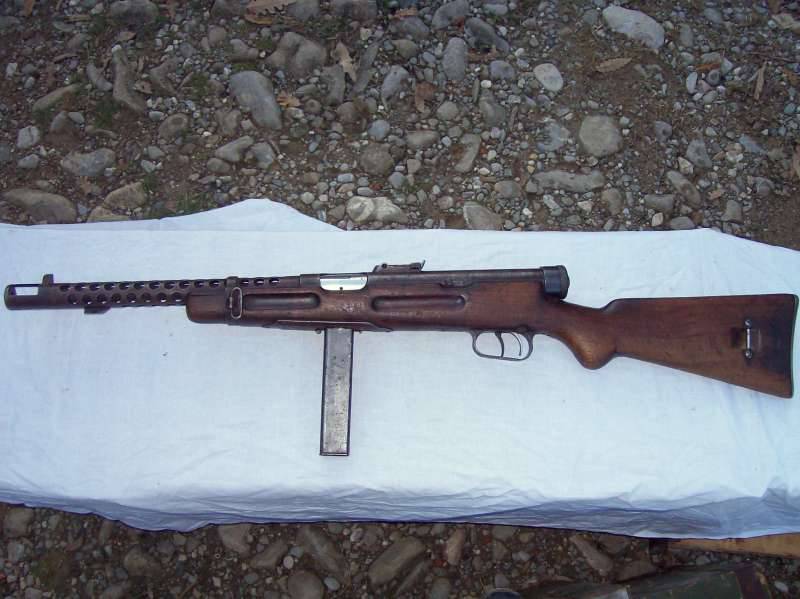
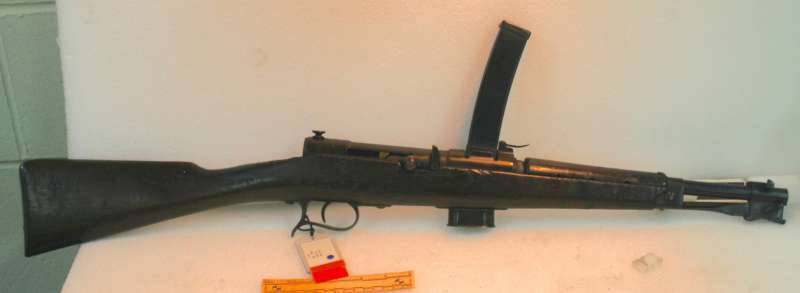
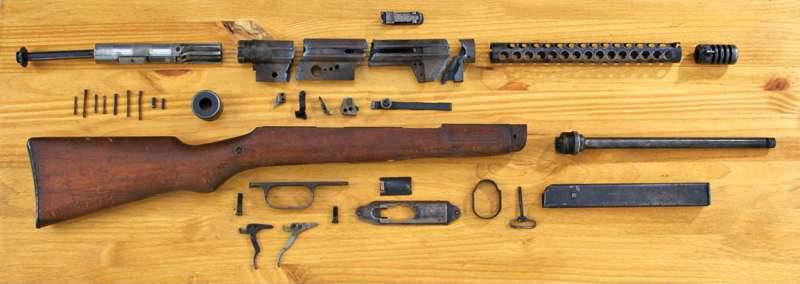
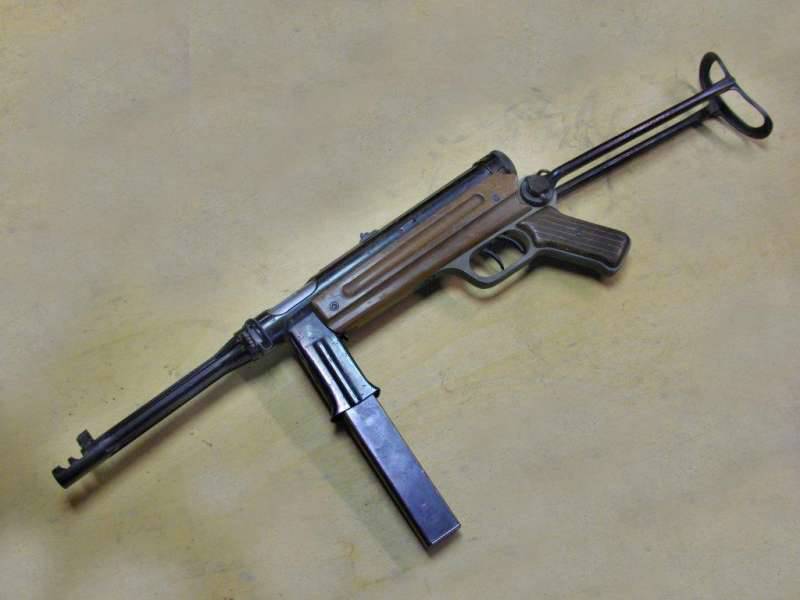
Information